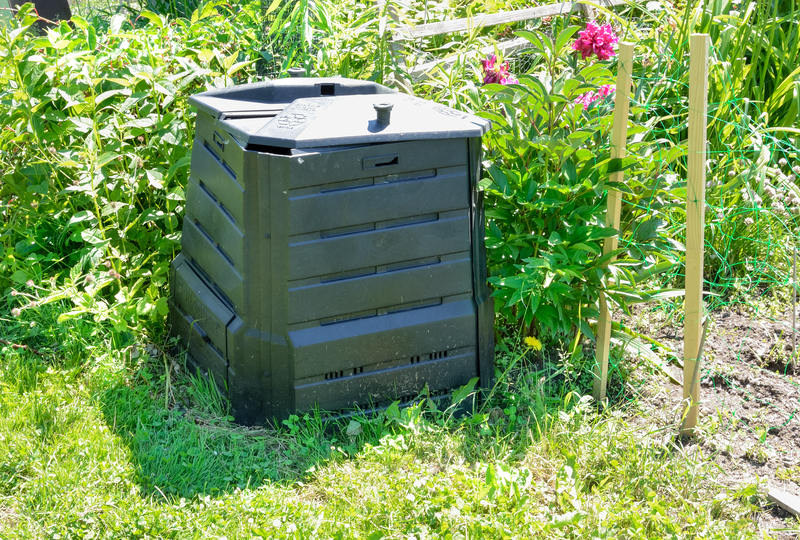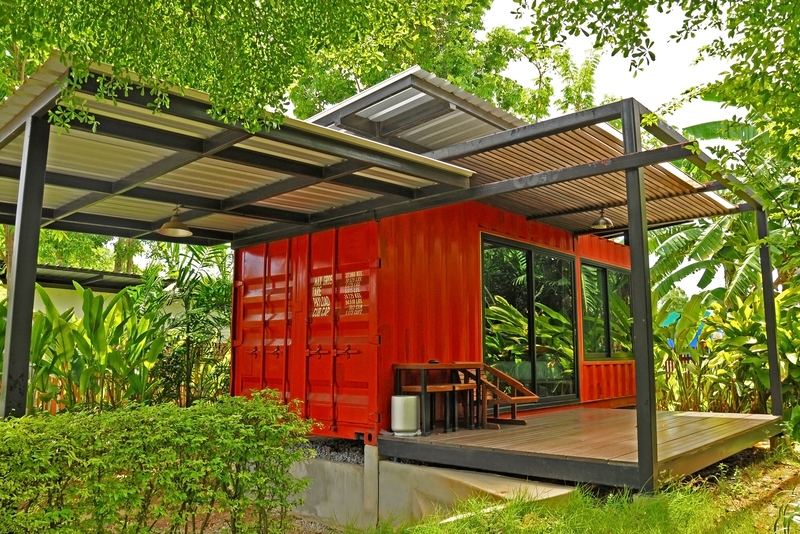Transforming Discarded Items into Unique Art Pieces with Simple Upcycling
Upcycling is a creative and environmentally friendly way of taking old, discarded, or unused items and transforming them into new, unique art pieces. In a world increasingly aware of sustainability and conscious consumption, simple upcycling techniques offer a way not only to reduce waste but also to foster creativity. Whether you are an experienced artist or a beginner looking for new inspiration, upcycling can be the key to turning trash into treasure.

What is Upcycling and Why is it Important?
Upcycling refers to the process of repurposing discarded items in such a way that they become more valuable or appealing. Unlike recycling, which typically breaks down materials to create new products, upcycling focuses on creative reuse, maintaining the original form but elevating function or aesthetic.
- Environmental Impact: Upcycling helps divert waste from landfills.
- Creativity Unleashed: It encourages innovative thinking and resourcefulness.
- Uniqueness: The resulting art pieces are often one-of-a-kind and personal.
By transforming discarded items into art, we give new life to materials that would otherwise be thrown away. This practice also promotes mindfulness about our consumption habits while allowing artists and hobbyists alike to express themselves through unconventional mediums.
Benefits of Turning Discarded Items Into Art
1. Environmental Sustainability
Every item upcycled into art is one less item in a landfill. By embracing simple upcycling, you directly decrease your environmental footprint and participate in a global effort for sustainability.
2. Unmatched Originality
The beauty of upcycled art is that every piece tells its own story. No two projects are quite the same, as the character and patina of old materials provide a unique signature.
3. Cost-Efficiency
Many discarded materials are free or inexpensive. Upcycled art projects can therefore be accessible to everyone, without the need for specialized or costly supplies.
4. Therapeutic and Educational Value
The process of creating art through upcycling can be highly therapeutic, offering an outlet for creativity and stress relief. It is also a fantastic way to teach children about recycling, sustainability, and the value of creativity.
Simple Upcycling Ideas for Unique Art Pieces
1. Repurposed Bottles and Jars
- Vases and Candle Holders: Old glass bottles and jars can be cleaned, painted, and decorated to serve as stunning vases or candle holders.
- Miniature Terrariums: Larger jars can be filled with soil, pebbles, and small plants to create vibrant, low-maintenance terrariums.
2. Upcycled Furniture Art
- Artful Shelving: Wooden crates or pallets can be sanded and painted to create unique shelves or wall art installations.
- Chair Planters: Broken chairs can gain new life as quirky garden planters or outdoor art installations.
3. Textile Transformations
- Patchwork Wall Art: Scrap fabrics can be sewn or glued together on a canvas for striking, colorful displays.
- Woven Baskets: Old t-shirts or bedsheets can be cut into strips and woven into functional and decorative baskets.
4. Upcycled Magazine and Book Art
- Paper Sculptures: Rolled magazine pages can be shaped into bowls, wall hangings, or even statuettes.
- Literary Art: Old hardcovers can be hollowed out to create secret storage or repurposed as journals or photo albums.
5. Metal and Electronic Art
- Junk Assemblage Sculptures: Salvaged metal parts and non-working electronics can be combined into steampunk-inspired sculptures and wall art.
- Garden Decor: Old cutlery or hardware can become whimsical garden stakes, wind chimes, or bird feeders.
Getting Started: Tips for Simple Upcycling Projects
1. Start Small
Don't feel overwhelmed by complex projects--begin with a simple item you no longer need. Even painting an old jar or assembling a collage from scraps can be immensely satisfying.
2. Let the Materials Inspire You
The shape, texture, and color of discarded items often guide the final design. Allow yourself to experiment and embrace unexpected outcomes.
3. Gather Basic Tools
- Scissors, pliers, and basic hand tools
- Glue (hot glue gun or craft glue)
- Paints and brushes
- Sandpaper
4. Think Function and Aesthetic
While upcycling is naturally artistic, it can also be functional. Consider how your creation will be used, whether as wall art, a lamp, or a decorative bowl.
5. Safety First
Always protect yourself when working with sharp edges, glass, or when soldering and painting. Wear gloves, masks, and eye protection as needed.
Inspiring Upcycled Art Projects You Can Try
Upcycled CD Mosaic Art
Old CDs and DVDs, with their shimmering surfaces, make stunning mosaics. By cutting them into pieces and adhering them to a frame, tray, or tabletop, you create iridescent art that catches the light beautifully.
- Break CDs carefully using scissors or pliers (wear eye protection!)
- Arrange the pieces on your base item in a mosaic pattern
- Use strong glue to secure pieces
- Fill gaps with grout for a professional finish
Vintage Button Collages
If you have a collection of stray buttons, consider crafting them into vibrant wall art or jewelry. The varied sizes and hues offer endless design possibilities.
- Draw or print a template on canvas or thick paper
- Glue buttons along the lines to fill the design
- Frame your finished work for display
Upcycled Wooden Pallet Wall Art
Discarded pallets are a favorite among upcyclers. Sand down the wood, paint or stain it, and use it as a canvas for quotes, abstract designs, or even as a mural base.
- Clean and sand the pallet thoroughly
- Paint background color or patterns
- Stencil or freehand draw designs, words, or images
Light Bulb Terrariums
Burnt out bulbs can become delicate, enchanting terrariums. With patience and care, these make beautiful hanging ornaments or table decor.
- Remove the metal cap and inside filament (carefully!)
- Clean the inside thoroughly
- Add small pebbles, moss, or succulents
- Hang with wire or place in a small stand
Tire Garden Sculptures
Instead of sending old tires to the landfill, turn them into bold garden art. Stack, paint, and carve tires into playful creatures, planters, or even outdoor furniture.
- Wash and dry the tires
- Paint using exterior-grade paints
- Stack and secure as needed, using bolts or strong adhesive
Simple Upcycling as a Form of Unique Artistic Expression
Repurposing discarded items into art not only serves the environment--it also encourages a radical rethinking of material value. What some see as junk, an upcycling artist sees as potential. This shift in mindset is empowering and can inspire others to view waste in a new light.
From broken instruments to rusty hardware, every discarded object tells a story. Through simple upcycling art projects, you have the chance to weave these stories into your creations. Your works can spark conversations about sustainability, resourcefulness, and the limitless nature of human imagination.
How to Find Materials for Upcycled Art
- Local Thrift Stores: These are treasure troves for unique and usable items at low prices.
- Yard Sales and Flea Markets: Often, sellers are glad to part with things for little or no money.
- Community Recycling Centers: Some centers have areas for reusable items--great for upcycling artists.
- Online Classifieds: Check areas like Freecycle, Craigslist, or local Facebook groups for free or cheap materials.
- Your Own Home: Broken household items, old clothes, and packaging can all become art supplies.
Showcasing and Selling Your Upcycled Art
Once you've mastered the basics of transforming old items into unique art pieces, don't hesitate to share your creations. Here are some platforms and tips:
- Social Media: Platforms like Instagram and Pinterest are ideal for visual art, helping to reach a global audience.
- Online Marketplaces: Etsy, eBay, and even dedicated upcycled art shops allow you to sell your work directly.
- Local Art Fairs and Exhibits: Community events and galleries often welcome and celebrate unique, eco-conscious art.
- Personal Blog or Website: Documenting your process not only catalogs your work but also inspires others to join the upcycling movement.

Upcycling Tips from Professional Artists
- "Let the imperfections speak." - Unpolished, timeworn materials have a story. Use their quirks to your advantage.
- "Combine function with form." - A beautiful upcycled lamp or table can be both artistic and practical.
- "Network with other upcyclers." - Sharing ideas and collaborating can expand your skill set and open new creative paths.
- "Stay curious." - Explore new materials, techniques, and inspiration sources. The most unique upcycled art often arises from experimentation.
Conclusion: Your Creative Eco-Journey Awaits
Transforming discarded items into unique art pieces with simple upcycling is more than a trend--it's a way to foster sustainability, ignite creativity, and beautify your surroundings. Every object has potential; all it needs is your imagination and a willingness to see beyond its original purpose.
Whether you're crafting a whimsical sculpture from scrap metal or assembling a mosaic from broken ceramics, simple upcycling enables you to create something truly original. Start today--your next masterpiece may be hiding in yesterday's trash!
Ready to begin your upcycling journey?
- Look around your home for overlooked materials.
- Explore local thrift stores or community recycling days.
- Share your creations online to inspire others.
Simple upcycling empowers you to transform waste into wonder, bringing beauty and purpose to the unloved and unused. With a bit of creativity and resourcefulness, anyone can become an upcycling artist!